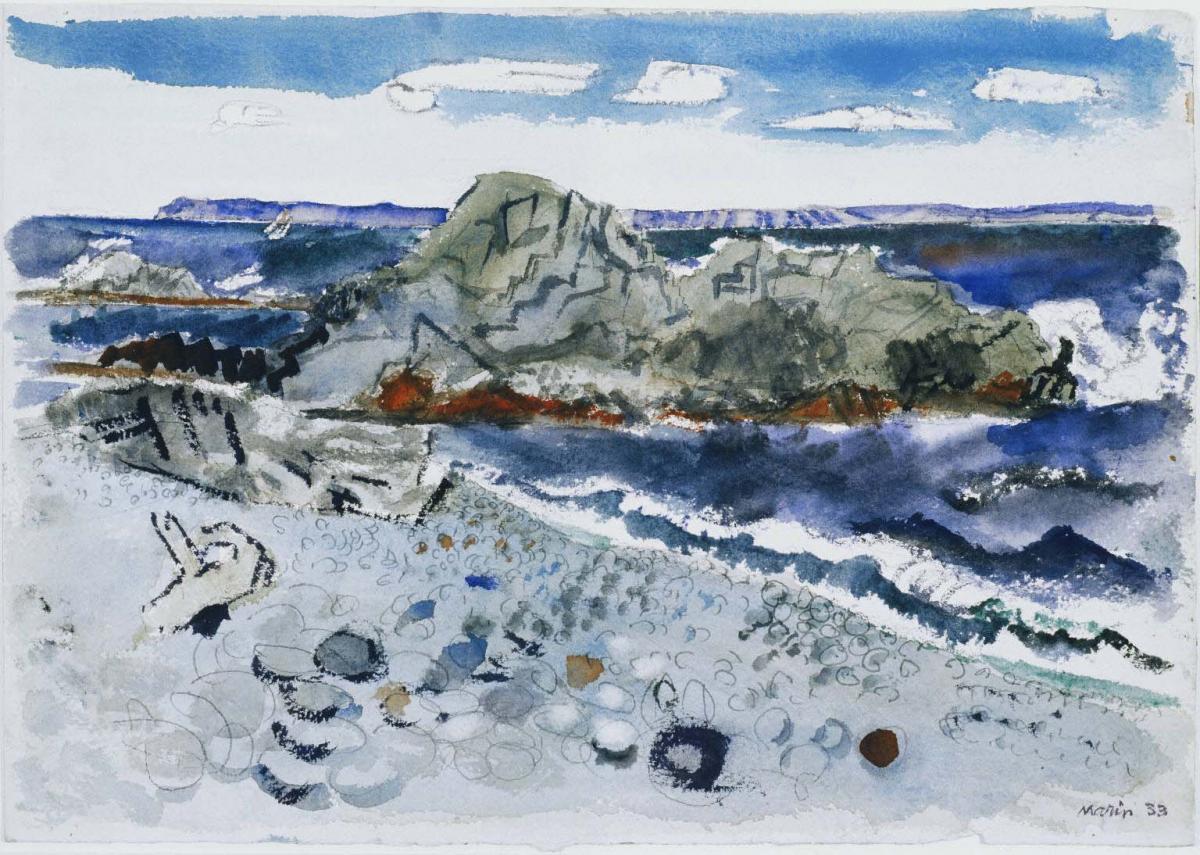Quoddy Head, Maine Coast
John Marin ( 1933 )

When John Marin painted Quoddy Head, Maine Coast in 1933, he had already begun to focus more on the natural landscape over the bustle of cityscapes. His watercolors of this decade, like his previous works, were expressive of his own feelings toward his subject. Marin’s affinity and love of nature is reflected in his bright palette and graceful handling of the brush. Marin elevated the status of landscape painting by infusing the scene with subjectivity and passion.
In Quoddy Head, Maine Coast, Marin celebrated the rocky Maine coast, which is known for bracing winds and surging surf. The rugged, energetic quality of this watercolor may have resulted from his concurrent interest in the expressive possibilities of oil. Marin may have tried to emulate the impasto technique of oil in the strong, almost tactile patterns that define the rocks and waves, and the various textures created by the juxtaposing color wash and line that define the pebbles on the beach.
Critics appreciated Marin’s masterful technique, embracing the medium of watercolor, yet still pushing it beyond its limits, as well as his ability to paint nature. Though Marin was an abstract painter, he had the ability to faithfully represent nature, whether peaceful or wild, with a particular emphasis on the beauty of the site. Marin’s expressive paintings, although not naturalistic representation of the landscape, conveyed nature’s greater meaning.